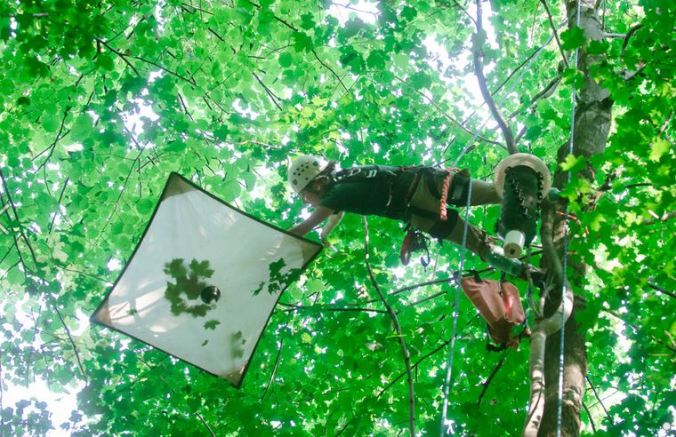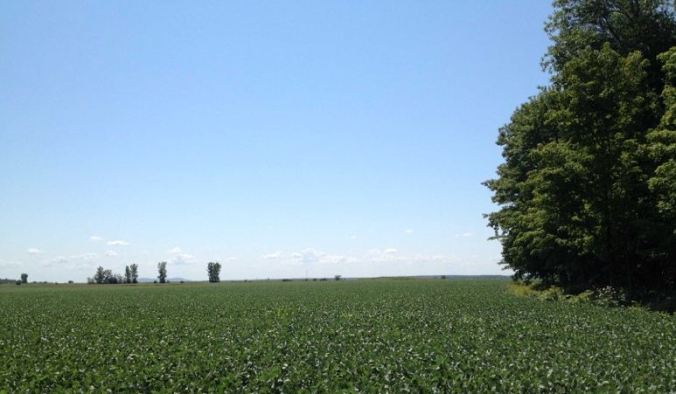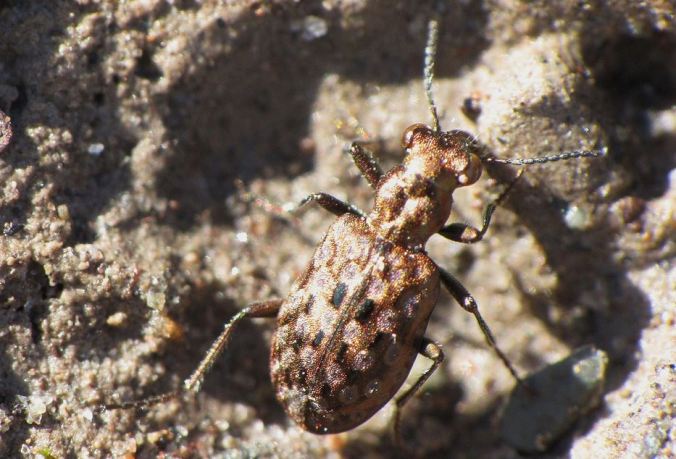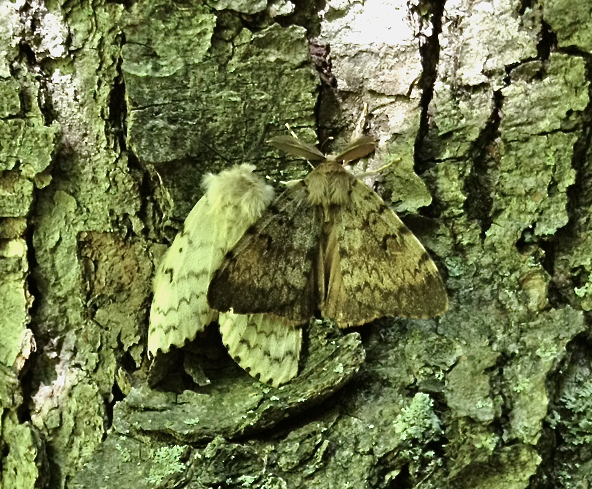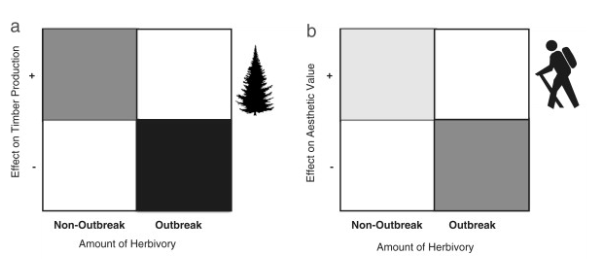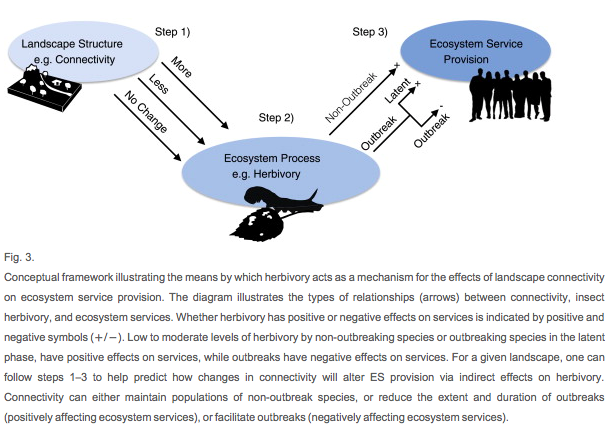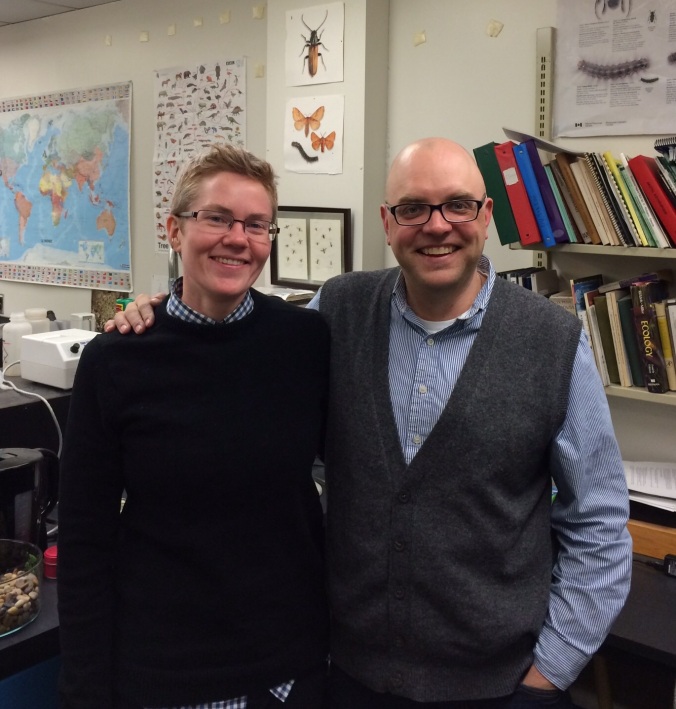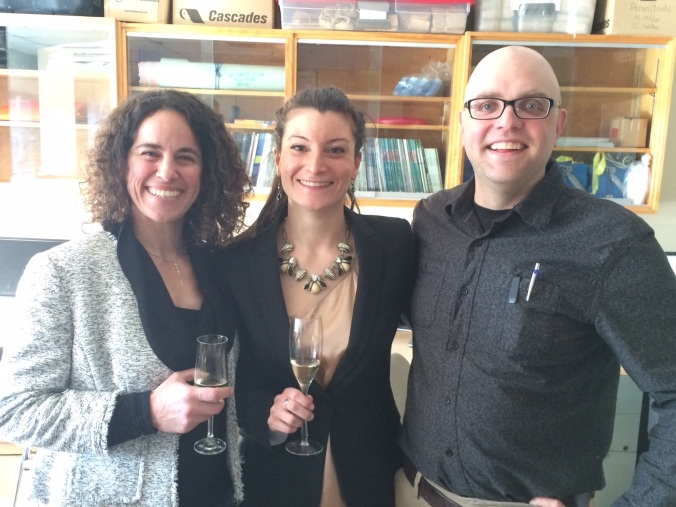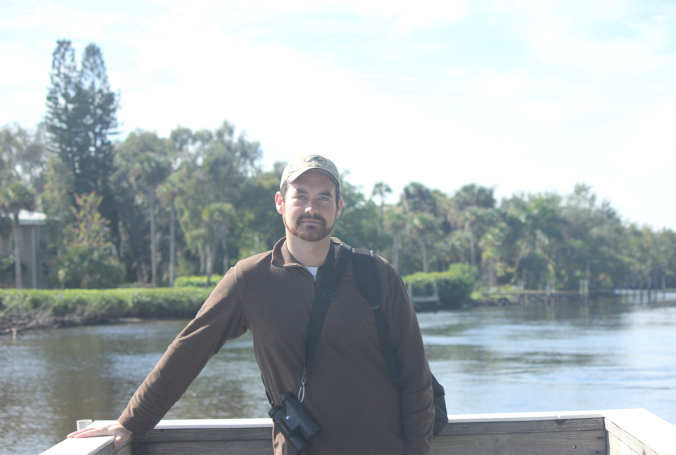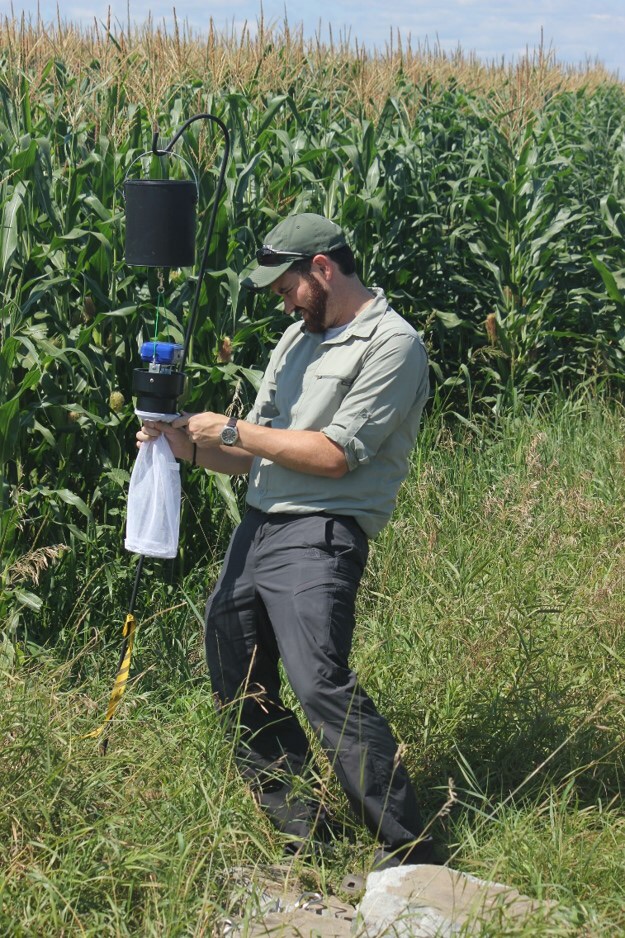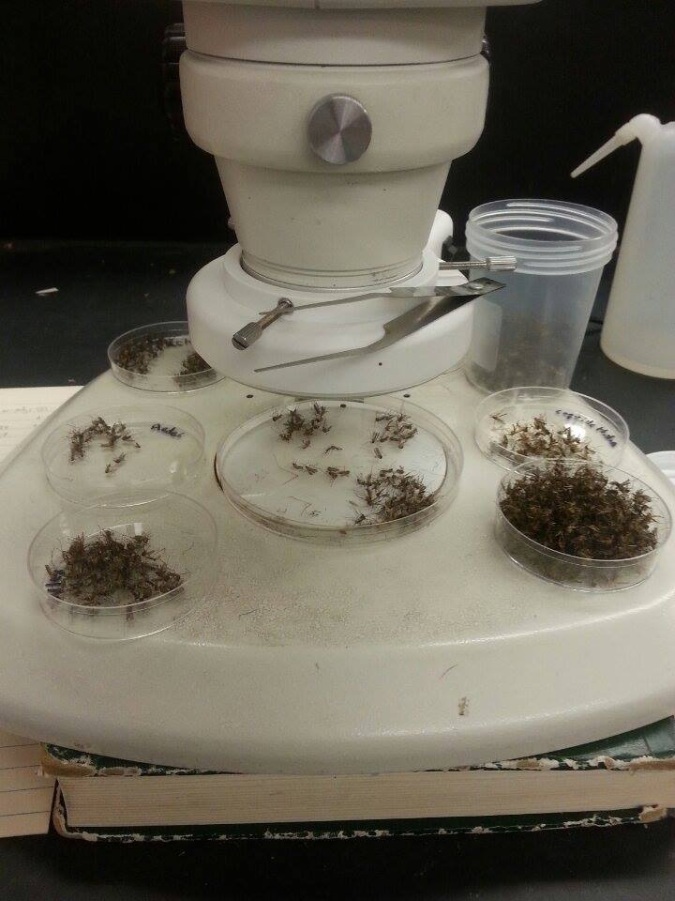I was recently invited down to the Arkansas to be a “student-selected” speaker for their entomology Department. Their graduate students decide on someone to invite down to Fayetteville, and the honouree gets to visit that lovely part of the world, meet with grad students and professors in the Department, and give a seminar. It was a fabulous trip, and it was incredibly special to be recognized by graduate students. Thank you!
Quite a lot of my discussions with students ended up focusing on career development, pressures of the tenure-track run, and professional development. The students asked great questions, so great that I thought I would post them here, with some responses. (Surely other people will have better advice than what I have written, and please comment if you are so inclined!)
So many professors I know are always so stressed. How do you avoid burn-out, and why would anyone want to be a prof since it takes a real toll!
Indeed, there are days when the work is stressful, and pressures of the tenure run can be really tough. Grant writing, learning to run a lab, teaching and supervising all happen at the same time. Even after 14 years as a Prof, the stress can remain and still rears its ugly head. The job doesn’t get easier or stress-free over time.
I know this seems somewhat counter-intuitive at first, but for me, the best way to reduce work-related stress is to not work too much. You do not need to work 80 hrs a week to succeed in Academia, and finding balance between work and life is critically important. Even if you *love* everything about your research, take time away from it. Real time. Proper weekends. Find hobbies or activities that take your mind and body to somewhere else, whether it’s playing the ukulele or learning to bake. Making time for exercise is important too. A healthy body really does help with work productivity and lets you get a little distance.
The work will always be there. No matter how hard you try to get ahead on a project, the next task or project will be waiting for you. Nagging you and calling you name… Don’t give in!
This relates very much to the overwhelming urge to be a perfectionist, and do *everything* at an unattainable level. This must be jettisoned. Now. When you start to work a little less, you will actually start an important process of prioritizing and leaning the skill of time management. With less time at work, you will get more efficient with the time you do spend at work!
Why would anyone want to be a stressed-out Prof? Well… It remains a rather amazing job, and if that’s your career goal, go for it! But it doesn’t have to be a career goal, and we need to all do a better job at recognizing and valuing PhD career paths outside of higher education (check this out about “life after Academia“). Regardless, however, leaning how to manage stress and time are a part of the work, whether at a university, research institute, in government, or elsewhere. If you are doing grad work, it’s unlikely you will work in a “stress free” environment in your future.
We have to be so specialized during grad school, yet also need to figure out how to be generalists. How do we make that transition?
This is a great question, and very true! We become experts at the end of a MSc or PhD, and then are suddenly thrust into teaching an intro Biology class, or having to write a collaborative grant on a topic at arm’s length from our own expertise. For those interested in a career in Academia, the job requires people to be specialists and generalists, and that’s not always easy.
However, the transition is easier if you start taking small steps towards being a generalist early on. Often a qualifying (or comprehensive) exam during a PhD gets us thinking in more general terms, as that’s a time we are thinking a lot about how our research fits into a broader conceptual framework, or perhaps we are asked questions outside of our area, as a means for the committee to assess limits of knowledge. After these exams, it’s easy to slip back into our projects with a sigh of relief, and we delve back into become experts. It becomes a nice and cozy comfort zone. However, it’s important to start and keep some habits and continue on the path of being a generalist. Here are some ideas:
- Spend a bit of time, every day, reading interesting stories at the periphery of your subject areas, whether that means checking out science blogs, listening to podcasts or following interesting people on social media. I do this every morning with a cup of coffee: I have a number of blogs I follow regularly, and I always check out tweets from scientists with an eye for interesting stories (e.g., Malcolm Campbell is a great person to follow). Most of these stories are not related directly to my area of research, but they help me keep up on what is happening in ecology, evolutionary biology, entomology and Arachnology, Heck, these stories sometimes help me rethink my own research, or give me ideas for new avenues of research. It’s a great use of time.
- Try to attend any seminars offered by guest speakers, whether in your own department, or elsewhere. Often these guests are excellent speakers, and are doing interesting things worth hearing about. It is sometimes tricky to justify getting away from the lab bench, but exposure to different areas of study will help you become more of a generalist.
- If your department offers a journal club, take part as much as you can, as this will expose you to new literature in other areas of study. The papers you will discuss may end up being great case studies when you first teach that intro ecology class. This will also help you learn methods, techniques and language from other disciplines, which will also help you later in your career, especially when you write collaborative and interdisciplinary grants.
How do we play the “impact factor” game with publications, knowing how flawed that index is! It’s sometimes so hard to know where to try to publish! Help!
Groan. This is a tough one! Despite the known issues with impact factors, some people/search committees still put value on perceived value of journals, and want to see a CV that has publications in “top tier” journals. The push for publishing open access (OA) is sometimes at odds with this, since not all OA journals are indexed in the same way as other journals, and some of the great OA journals coming on stream are not well known to some of the people that may be reviewing your CV.
So, the best advice I can have is to try to diversify your publications as much as you can, showing that you *can* publish in higher “impact” journals, but that you are also well aware of other publications venues, and most of all, that your work is of high quality. You can make a direct case on your CV or cover letter to help explain your logic, and there are excellent reasons why you might choose one journal over another despite a perceived difference in that journal’s impact.
What remains important in publishing as an early-career researcher is that it’s clear to any committee what *your* research is, and how you have made important contributions to your discipline, even if all your papers aren’t in top-tier journals. Any search committee wants to know you can be a leader in your discipline.
Sometimes it seems “frowned upon” to say you want to work at a more teaching-focused college instead of a big R1 school. Why does this bias exist?
I think this actually comes from a good place in that supervisors want the very best for their students, and the “best” is often thought of as a select group of R1 (research-intensive) schools. This ends up being pervasive in the culture of higher education, and there becomes an assumption that everyone wants to work in R1 schools but many end up “settling” for a lesser-known University. So, this means that all the profs not at R1 schools done really want to be there, and everyone is looking longingly towards greener pastures. This is, of course, entirely flawed logic because rankings are fundamentally flawed. But, speaking as both a parent and a supervisor, we don’t often think logically about those we care about and are mentoring. However, I firmly believe that it’s generally bad advice to bias any student’s thinking around their career path. An open mind is much, much better.
That being said, it is important to look critically at yourself and figure out what gives you the most joy and happiness. If you love being in the classroom, embrace it! If you can’t stand teaching but are at ease behind a lab bench or writing grants, embrace it! Then, once you have done this self-examination, stick to your guns and have an honest and frank discussion about this with those doing the frowning. Your supervisors and mentors really need to know what you want, in the best-case scenario, because they are a strong ally for you when you are looking for a job, whether it’s giving an informal reference over the phone, or writing a letter of reference.
Now, we all know that academic jobs are not that easy to get, and despite what you may *want* as a perfect job, this should not stop you from applying to any positions that you might be qualified: keep a open mind because you may find yourself in a R1 school, and you might love it (I know this from personal experience: I always saw myself at a smaller college/University yet managed to land a job at one of the big research Universities in Canada, even though I didn’t think I had a chance of landing the job! And, I’m very happy with the job).
Once you do land a job, and you are happy about it, spread the word. Discuss how great it is to be at your University, whether a liberal arts college, Land grant University, or Ivy League. They are all great.
The pillars of the ivory tower remain deeply planted, and despite increased interest in public engagement and outreach, Universities remain slow-moving, old, conservative institutions. Will this ever change?
Ok, so this is a pretty big question. So big that it will wait for another post since this one is getting a little too long… I will save that for another time.
In sum, interacting with grad students at Arkansas was truly a delight. They were confident, bright, engaged and inquisitive. Spending time with a group of graduate students gives me great hope and optimism, and their insightful questions are an indication of this.



